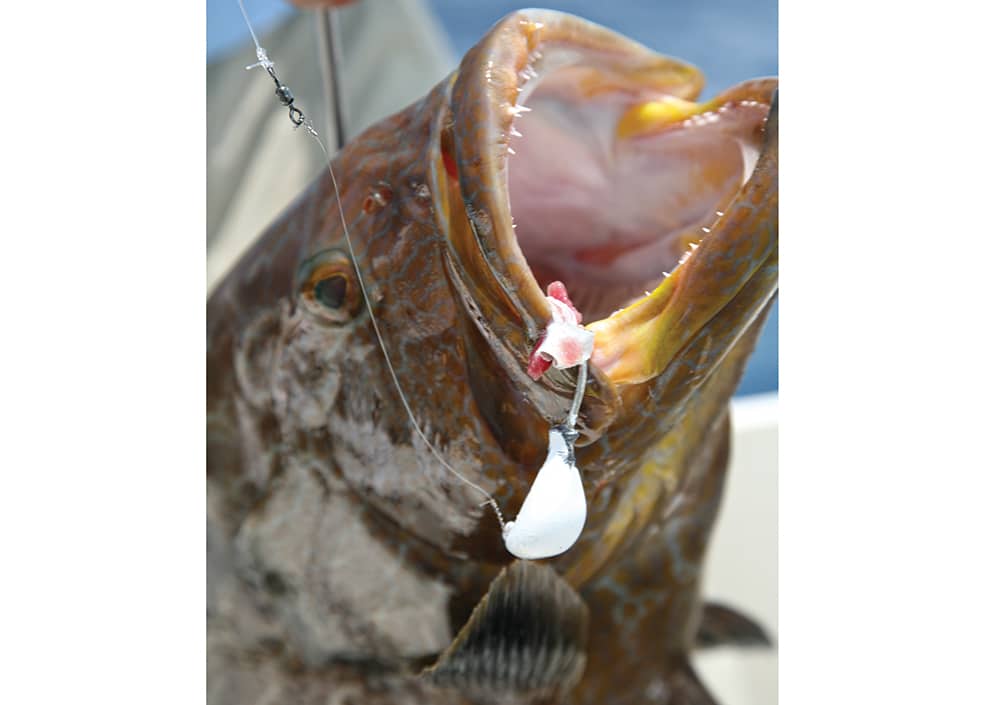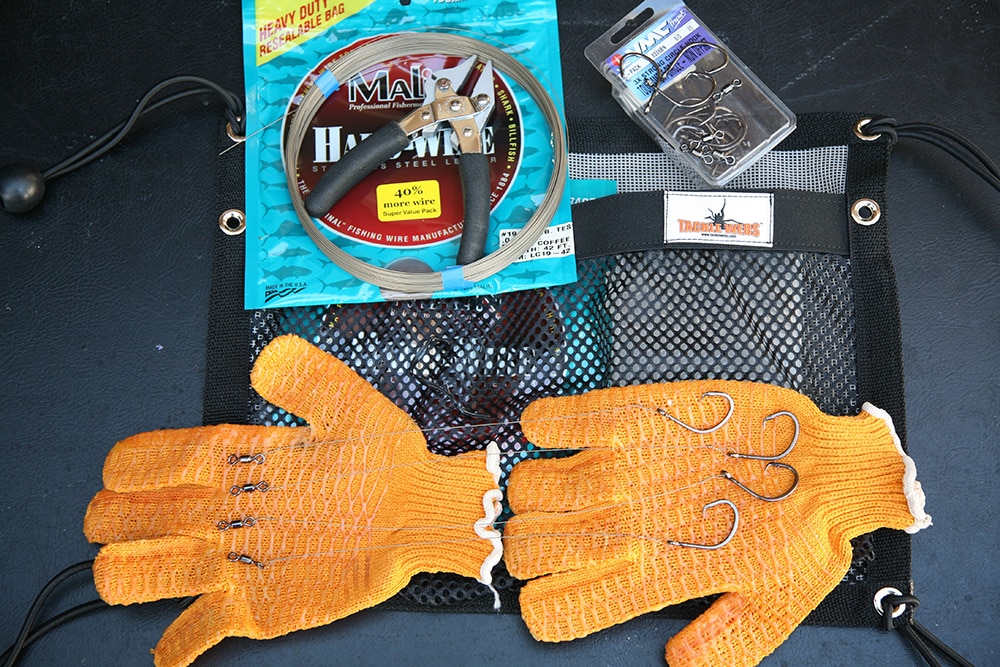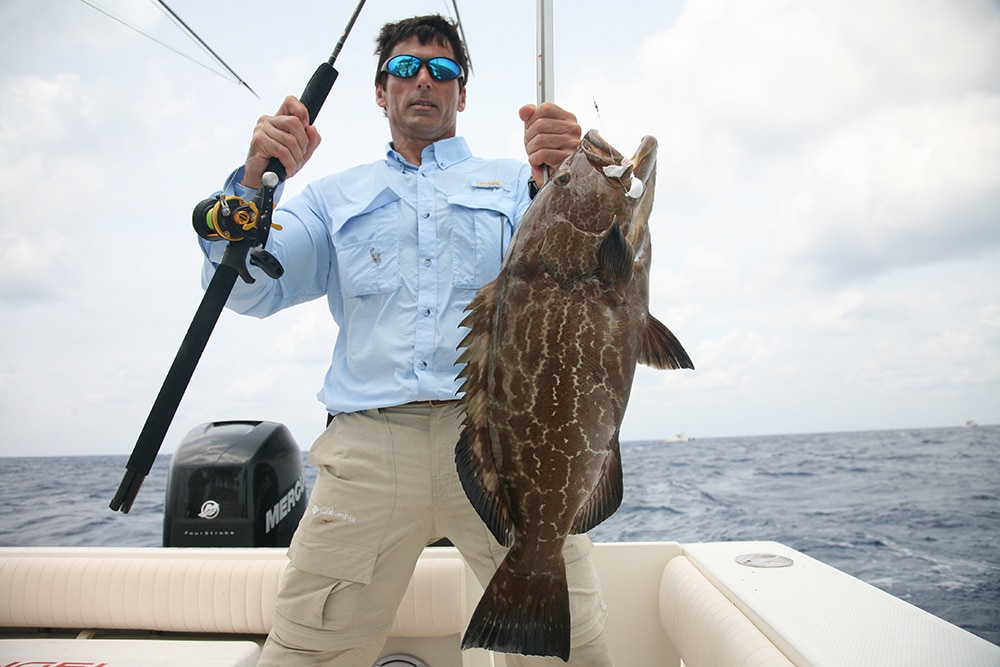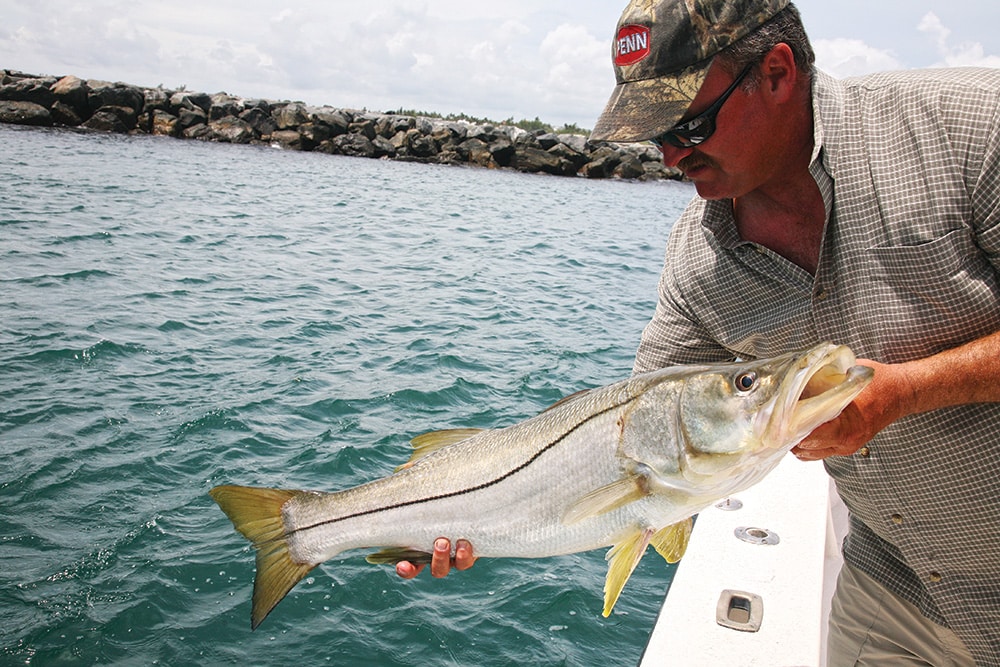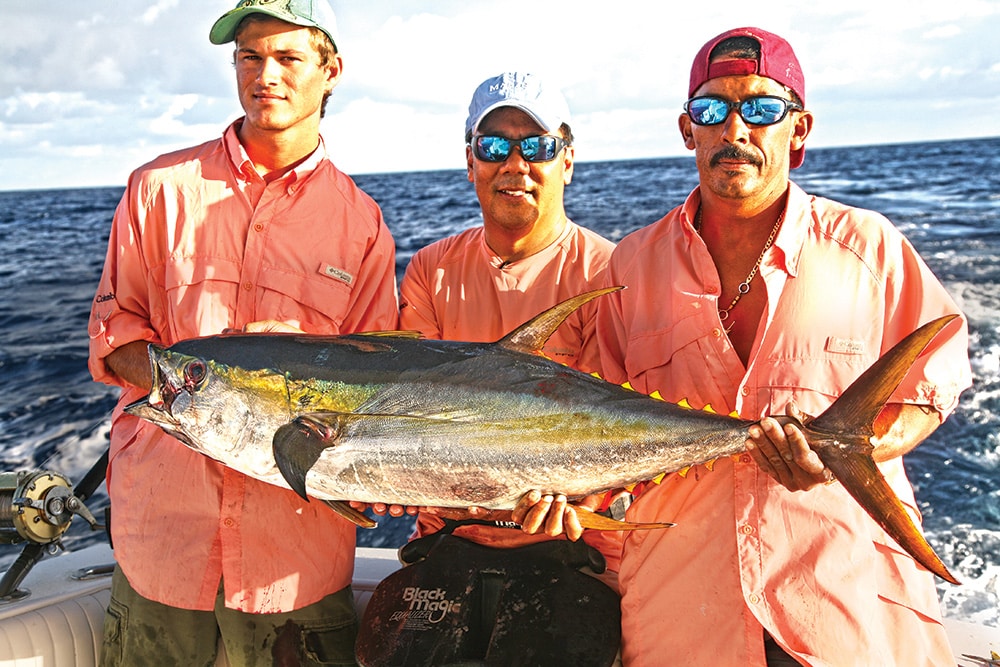
Don’t forget to click through the images in the gallery above.
I remember when I was a kid, watching a crusty old salt who spent his retirement on the bank of a North Dade canal soaking mullet halves for snook. There’s nothing unusual about that, but how he was catching them certainly was.
He’d snag a mullet, cut it in half, and impale a section on a 7/0 long-shank hook secured to four feet of No. 7 wire. He fastened that to a barrel swivel tied to the line, with a large egg sinker above it. He tossed that out on heavy spin tackle and caught the heck out of huge snook, many in the 30-pound class, and a few in the low 40s. But, the jaw-dropper was one that weighed 53 pounds, a certain world record, had he cared about it. Instead, he filleted the snook and salted the monstrous head to keep as a memento. My cousin and I, along with our fathers, saw the whole fish after it was caught.
As old and behind the times as we thought this guy was, it turns out he had this game covered. He explained that the small diameter and stiffness of single-strand wire sliced through the current better and lay flatter on the bottom than a monofilament leader. Plus, the brown wire blended in with the tannin-stained water and rocky bottom. In short, the leader could not be detected by those larger, craftier snook.
Wire Trumps Mono
Single-strand wire leader is a mainstay for toothy species the likes of bluefish, king and Spanish mackerel, wahoo, and sharks. Nylon and fluorocarbon monofilament are better suited for game fish without threatening dentition. Yet mono is not always advantageous for nontoothy fish: In fact, wire leader can actually produce better in certain situations.
Wire in the Blue
In the good old days, we rigged all our trolling baits on single-strand wire, mostly No. 8 (93-pound-test), and caught dolphin, wahoo, sailfish, tuna and marlin. The baits rigged on wire performed better than those rigged on mono, because the stiff wire cut through the water better and the baits tracked straighter. But over time, we came to favor fluorocarbon over wire for the stealth aspects.
Capt. Sam Rescigno operates the Mary M III from Barnegat Light, New Jersey. A popular captain who does it all — stripers, fluke, blackfish, sea bass, dolphin and tunas — Rescigno still sticks with his old-school ways on the troll.
“We still pull No. 9 wire for most of our trolling, especially school bluefins,” he says. “It’s a good, all-around leader that catches a lot of fish. With tunas, you don’t have to worry about them jumping and kinking the wire, like you would with billfish. Tuna run straight out and then sound, and I believe wire leader hooks them better. It doesn’t stretch.”
Rescigno swears by wire on cedar plugs too. “Wire brings out the best in a cedar plug,” he says. “It lets it track with more of an erratic action. The only downside is where the wire enters the head, the wobbling sometimes kinks it. If the wire looks compromised, cut off the bent or kinked portion, re-rig, and get that lure back out there.”
Capt. Bouncer Smith is a living legend in South Florida, an area devoted to 30- and 50-pound fluoro leaders and small circle hooks for sailfish. Smith bucks the tide. “Most every day when we’re sailfishing, I attach a 9-inch length of No. 4 (40-pound-test) single-strand wire to the end of my 14-foot, 60-pound mono leaders with a small swivel,” he says.
Smith contends that, especially with circle hooks, the light wire slides through the maw of sailfish better than mono and fluorocarbon, which is imperative for circle hooks to set effectively. In addition to converting more sailfish bites to releases, wire traces stop kingfish and wahoo from biting their way to freedom, as they commonly do with nonmetallic leaders.
Wired Shallow
Perhaps wire is more difficult for fish to see when trolling or drifting. But how about in clear inshore waters and for species known to be very cautious?
“Wire leader is a staple in my tarpon fishing,” says Smith. “With dead baits on the bottom and with live mullet, I use a couple of feet of No. 8 (93-pound-test) single-strand wire. Tarpon have no teeth, but when they clamp down hard on a mono leader, their mouths are rough enough to keep the leader from sliding. And when that happens, they feel the pressure, jump and throw the hook before it’s set. Wire slides through their jaws and lets the circle hook set the way it should. We fish in cloudy water quite a bit, so I’m not worried about the tarpon noticing the wire.”
That premise applies for that trophy snook fisherman; snook also have a raspy mouth. The same can be said of big striped bass, cobia, amberjack, groupers, snappers, dolphin and tuna.
Smith discovered that wire works wonders on mutton snapper, even in the clear shallows of Biscayne Bay. “Years ago, we were trying to catch sharks in the finger channels with No. 7 or No. 8 wire leaders and barracuda chunks and fillets,” says Smith. “The lemon and spinner sharks didn’t cooperate, but we started catching mutton snappers. We then switched to monofilament leaders and smaller baits for the muttons, but they wouldn’t bite. We went back to the wire leaders, and they bit. The wire leaders sank and become covered with sand, while the mono leaders remained visible to the snappers.”
And if catching snappers on wire isn’t impressive enough, how about bonefish? “Four to five inches of No. 3 (31-pound-test) wire carries a bait to the bottom without the need for a split shot. The wire disappears under the silt and goes undetected by bonefish.”
There are times when you can’t beat old-fashioned single-strand wire. Think about that when you’re struggling to get a bite, and when those finesse tactics just aren’t cutting it.
